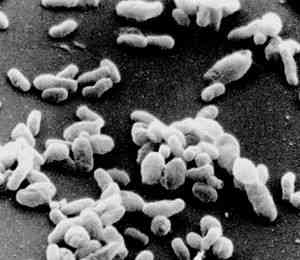

MedFriendly®


Q Fever
Q fever is a type of disease transmitted to humans by
animals. It typically occurs in domestic farm animals
(e.g., sheep, cows, goats) without symptoms. Rodents,
birds, and ticks are also known to carry the disease
and transmit it to humans.
HOW IS Q FEVER TRANSMITTED?
The bacteria that causes Q fever is known as Coxiella
burnetii. This bacteria is present in the milk, urine,
feces, and tissues of the animals mentioned above.
C. burnetti: the cause of Q fever.
FEATURED BOOK: Coxiella Burnetti: Recent Advances in Q Fever Research
The bacteria are especially present in the placenta of these animals. The placenta is an
organ in a female that nourishes a baby during pregnancy. Q fever can get transmitted to
humans when handling infected animal body parts or substances. Humans may also
contract Q fever by breathing in the bacteria through contaminated dust and other
particles in the air. Merely inhaling one Coxiella burnetii bacterium can be enough to
cause Q fever.
WHAT ARE SIGNS AND SYMPTOMS OF Q FEVER IN HUMANS?
Signs and symptoms of Q fever in humans include high fever, chills, tiredness, muscle
pain, loss of appetite, confusion, sore throat, nausea, vomiting, diarrhea, chest pain,
abdominal pain, and severe headache.
"Where Medical Information is Easy to Understand"™
Fever may go as high as 105 degrees Fahrenheit and last for three
weeks. During the second week of infection, a dry cough may
occur. A chest x-ray during this stage of infection may show that the
lungs are inflamed. In fact, chest pain in Q fever is caused by
infection of the connective tissue that surrounds the air sacs of the
lungs.
HOW IS Q FEVER DIAGNOSED?
Q fever is often misdiagnosed as the flu since the two diseases
share similar symptoms. This is why gathering a good history is
crucial. The history in a patient with Q fever should reveal recent
contact with animals, usually farm animals.
On physical examination, if an enlarged liver or spleen is detected, this also leads to increased suspicion
of the presence of Q fever. The spleen is an organ next to the stomach that helps fight infection and
removes and destroys worn-out red blood cells. Red blood cells are cells that help carry oxygen in the
blood.
Blood tests (known as agglutination testing and specific complement fixing) can be conducted to assess
for the presence of antibodies to the bacteria that cause Q fever. Antibodies are types of proteins that are
formed by the body to destroy foreign proteins known as antigens. When an antibody meets an antigen,
inflammation results. Agglutination testing will detect the concentration of specific antibodies in the blood.
Complement is a type of protein in the body that is destructive to certain types of bacteria after being
sensitized by antibodies. Complement fixation is a reaction by the body’s immune (defense) system in
which an antigen combines with an antibody and complement. If complement binds to the antigen-antibody
pair, this is known as complement fixation. The complement fixation test will detect if this binding has
occurred and has the ability to detect the presence of specific types of antigens.
HOW IS Q FEVER TREATED?
Q fever is treated by with antibiotics taken by mouth, such as tetracycline (in adults) and chloramphenicol
(in young children). In cases where symptoms suddenly appear, antibiotic treatment is usually continued
for 5 days until the fever has subsided.
WHAT COMPLICATIONS CAN RESULT FROM Q FEVER?
Q fever can lead to hepatitis. Hepatitis is an infection of the liver that causes liver inflammation. The liver
is the largest organ in the body and is responsible for filtering (removing) harmful chemical substances,
producing important chemicals for the body, and other important functions. In people with a history of hard
problems, Q fever can cause endocarditis (infection of heart valves).
CAN Q FEVER CAUSE DEATH?
Although it is technically possible, Q fever almost never causes death.
WHAT ELSE IS Q FEVER KNOWN AS?
Q fever is also known as nine mile fever.
WHY IS IT CALLED Q FEVER?
The “Q” stands for “query” because the cause of the disease was unknown at the time it was discovered.















